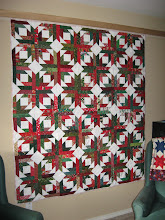I know at least two of you...feel free to introduce yourselves in my comments so I know who is reading...or who *else* might be reading!
I did more dye experiments the other day, and thought I'd share the results.
 I bought more hibiscus flowers, thinking that I could do a little experiment on getting different results from two different mordants. I had some junior assistants (who insisted on helping) pour the water in and add the flowers, but then it was hours of simmering and soaking. First I boiled the water, then it was about an hour of the flowers steeping in the hot water, drawing the color out, while the 50 gram yarn hanks soaked in vinegar (hank 1) or alum & cream of tartar (hank 2). I then carefully drained the liquid out of the yarn and poured the color into the two vessels containing the yarn and allowed them to steep for several hours.
I bought more hibiscus flowers, thinking that I could do a little experiment on getting different results from two different mordants. I had some junior assistants (who insisted on helping) pour the water in and add the flowers, but then it was hours of simmering and soaking. First I boiled the water, then it was about an hour of the flowers steeping in the hot water, drawing the color out, while the 50 gram yarn hanks soaked in vinegar (hank 1) or alum & cream of tartar (hank 2). I then carefully drained the liquid out of the yarn and poured the color into the two vessels containing the yarn and allowed them to steep for several hours. When I pulled it out after a while of soaking, gave them each a squeeze, and the yarn had barely changed color, then let it steep longer. And longer. And overnight. Before going to bed, I added more vinegar to hank 1 and more alum and cream of tartar to hank 2.
When I pulled it out after a while of soaking, gave them each a squeeze, and the yarn had barely changed color, then let it steep longer. And longer. And overnight. Before going to bed, I added more vinegar to hank 1 and more alum and cream of tartar to hank 2.The next day, I checked them again and the vinegar yarn was still quite pale while the alum mixture was getting some color. I had checked a web site that contained tips on natural dyeing that suggested alum was the way to go, and that it required simmering for a couple of hours, so I mixed them together and threw them back into the dye pot to let them simmer. I checked on it every 20 minutes or so, then forgot about it for a period of time...when I went back, most of the liquid was gone, so I pulled it off the stove to let it cool.
 In the end, instead of the bright red-purple color I was expecting, I got a rather pinky-brown. Disappointing, but at least it's a different color and it's permanent. I let it hang dry. In all, it took about 24 hours and cost $2.70.
In the end, instead of the bright red-purple color I was expecting, I got a rather pinky-brown. Disappointing, but at least it's a different color and it's permanent. I let it hang dry. In all, it took about 24 hours and cost $2.70.While it was out there drying on the line, I took another hank of yarn and made it the color I wanted using two packets of black cherry Kool Aid. It took 10 minutes and cost 50 cents.
Elewys






